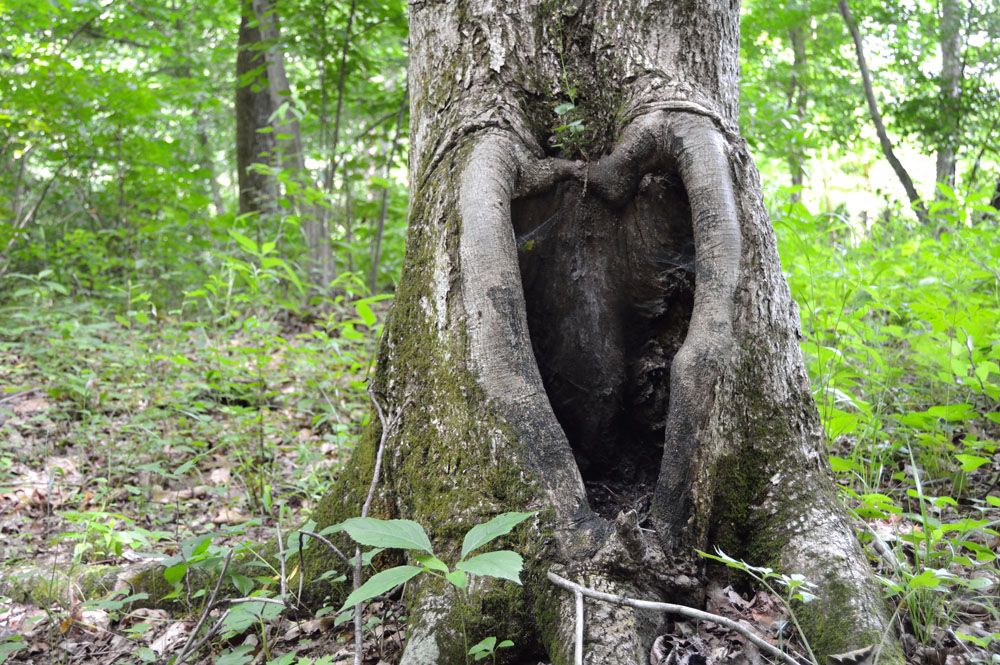
Heart Rot
Heart Rot
Heart-rot is a natural process that offers a habitat for fungus, uncommon saproxylic invertebrates, and certain vertebrates and releases nutrients for tree development. We’ll talk about heart rot disease in this article.
What is Heart Rot Disease?
Heart rot tree disease affects all hardwood trees and is caused by a variety of fungal infections. Fungi, particularly Polyporus and Fomes spp., induce deterioration in the “heartwood” of these trees’ trunks or branches.
Symptoms of Heart Rot:
A “conk,” or mushrooming fruiting body on the tree’s surface, is usually the first evidence of infection. A good rule of thumb is that for every conk produced, a cubic foot of inner heartwood wood has decayed— in other words, there’s a lot of poor wood behind that mushroom. Heart rot fungi, on the other hand, do not infect the live wood of healthy trees. Aside from the structural weakening caused by heart rot, a tree might appear to be in good condition while being infected with the disease.
Damages caused by heart Rot:
Heart rot is a fungus that affects old trees and produces decay in the trunks and branches of the trees. The fungus affects, then kills, the structural components of a tree, eventually turning it into a safety hazard. The damage may be undetectable from the tree’s exterior at first, but infected trees may be identified by the fruiting bodies on the outside of the bark.
Causes of Heart Rot in Trees:
Many different fungal agents and diseases can induce heart rot in live trees by infiltrating the tree’s central heartwood core through open wounds and exposed inner bark wood. Because heartwood makes up most of a tree’s core wood and support system, rot can lead the tree to fail and collapse over time.
Heartwood cells have some decay resistance, but they rely on a barrier of protection from the bark and other living tissue to stay alive. Heart rot may affect a variety of hardwoods and deciduous trees, but it’s more frequent in oaks infected with the decay fungus I. dryophilus and P. everhartii.
Heart rot is a natural component of the life cycle of hardwood trees, especially in native forests, and it will affect any tree that survives long enough. An ancient tree will almost likely be damaged by a storm at some time, allowing the fungus to enter and start the heart rot process. In rare circumstances, entire forests may be in jeopardy if, for example, a devastating storm did significant damage in the past. Because fungus spreads slowly within a tree, substantial weakening may not appear for many years after the first fungal infection.
Prevention and Control of Heart Rot
Heart rot is a disease that affects all hardwood trees across the world. It isn’t easy to prevent and manage, yet a tree that is appropriately watched throughout its life may be able to avoid it. Rot will be restricted to a tiny central core within a tree as long as it develops strongly. However, rot fungus can spread farther into the heartwood if the tree is damaged and fresh wood is exposed.
On a tree that hosts the heart rot fungus, there is no commercially viable fungicide to employ. The best approach to maintain your hardwood tree healthy and avoid heart rot is to use correct management strategies:
- Pruning incisions that expose significant amounts of wood should be minimized, and trees should be shaped at a young age so that substantial branch removal is not required later.
- After storm damage, remove broken branch stubs.
- Have an arborist inspect trees suspected of heart rot to see whether there is enough live wood for structural stability.
- Every few years, inspect trees to ensure that new growth is keeping a sound structure. There may be insufficient sound timber to maintain the tree in large trunks and primary branches with widespread deterioration.
